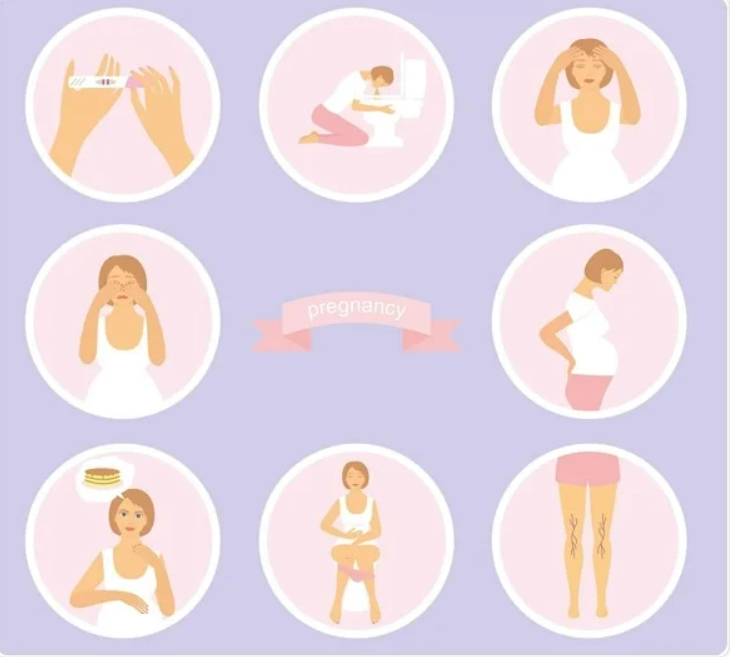Early Pregnancy Symptoms

Pregnancy is a major life event that requires the mother to undergo significant physiological and psychological changes (there are three trimesters, each lasting 13 weeks). Numerous changes take place during each trimester with the aim of assisting the fetus’ growth.
The physical and physiological adjustments made to accommodate the developing fetus and get ready for parenthood are the most noticeable. Presumptive, probable, and positive signs and symptoms of pregnancy are the three traditional categories. Positive indicators are the only ones that are 100% accurate, while the majority of the early signs of pregnancy fall into the presumptive group.
Early Pregnancy Clinical Signs
A missed period or cessation of menstruation is the most blatant early indicator of pregnancy. Despite the fact that skipping a period is not always indicative of pregnancy (especially if a woman has an irregular menstrual cycle), pregnancy should be considered if it is accompanied by morning sickness, breast tenderness, fatigue, and frequent urination.
A Manual for Adapting to Change
However, because any one of the aforementioned early indications could be a symptom of something other than pregnancy, they are not seen to be trustworthy markers of pregnancy. For instance, endocrine dysfunction, early menopause, malnutrition, diabetes mellitus, anemia, long-distance running, or stress might result in the cessation of menstruation.
Furthermore, acute infections, gastrointestinal issues, eating disorders, and food poisoning are all possible causes of nausea and vomiting. Premenstrual changes, chronic cystic mastitis, or the use of oral contraceptives may cause breast tenderness, while stress, anemia, or viral infections may cause fatigue.
Finally, there are numerous causes of urinary frequency besides pregnancy, including infection, cystocele, structural issues, pelvic tumors, and even emotional stress. As a result, even though certain early symptoms may indicate pregnancy, they are unreliable in establishing this condition.
This is why, when there are suspicions, the use of home pregnancy tests (based on the detection of urinary human chorionic gonadotropin) is advised as a first step. Up to four days prior to the anticipated menstruation, pregnancy can be identified with contemporary, clinically sensitive urine pregnancy tests.
Early pregnancy sonographic signs
Diagnostic sonography or ultrasound can also be used to spot some early pregnancy symptoms. The blastocyst, the earliest stage of an embryo, is implanted around a week after fertilization and is completely implanted into the uterine lining at about 9.5 days. On ultrasound imaging, the early gestational sac can be seen to grow later.
Ultrasonography can demonstrate that the uterine cavity remains largely undistorted and reasonably straight. This leads to the sonographic sign, also known as the intradecidual sign, when the gestational sac is seen next to a straight uterine cavity in a thick uterine lining.
The thick uterine lining’s echogenic region, which is visible around day 25 of the menstrual cycle, is the first sign of intrauterine gestation. After the two tiny bubbles, the amniotic sac and the yolk sac, have attached to the wall of the gestational sac, the first signs of an embryo’s existence can be seen two weeks later.
The embryonic disc is located between the two bubbles, and the entire formation is referred to as the double-bleb sign. The double-bleb sign is one of the most notable sonographic indicators of early pregnancy, along with the intradecidual sign.





